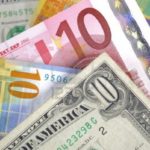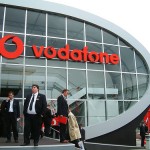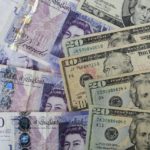 The euro advanced against the US dollar on Wednesday, following reports to show that French and German economies expanded more than anticipated during the second quarter of the year, boosting optimism over recovery in the euro region.
The euro advanced against the US dollar on Wednesday, following reports to show that French and German economies expanded more than anticipated during the second quarter of the year, boosting optimism over recovery in the euro region.
EUR/USD reached its highest point today at 1.3278 at 6:01 GMT, after which consolidation followed at 1.3267, ticking up 0.03%. Support was expected at August 13th low, 1.3232, while resistance was to be encountered at August 12th high, 1.3343.
Earlier today it became clear that the preliminary estimate of French Gross Domestic Product expanded by 0.5% during Q2 compared to Q1, exceeding forecasts of a 0.2% rise. In annual terms, economy grew by 0.3% during the second quarter, surprising expectations of a 0.1% contraction. It seems that economy managed to rid itself of the recessionary process, supported by increased domestic demand and recovery in inventories. France has been struggling with recession, experienced by the whole euro zone, by recording a rate of growth close to zero, which had not stimulated adding new job positions and led the unemployment rate to a 15-year high at 10.8% at the beginning of the year. The GDP figures fluctuated between a slight growth, zero change and a slight drop during the past eight quarters, but todays numbers ruined this tendency, marking the strongest increase on a quarterly basis since early 2011.
Additionally, the preliminary value of German Gross Domestic Product showed a 0.7% advance in Q2 compared to Q1, above estimates of a 0.6% increase. Annually, German economy grew by 0.5% during the second quarter, exceeding forecasts of a growth of 0.2%. With such a result Germany outdistanced most of the developed industrial countries. Despite these numbers, some experts warned that maintaining this rate of growth might be difficult in the upcoming quarters, as increased activity in the second quarter was a result of compensation of the registered economic slow down in the first quarter due to the harsh winter period, which had not probably allowed activity in German construction and industrial sectors to gain enough momentum.
Later in the trading day, the Euro zone was to release a report on the advance value of its Gross Domestic Product, as expectations pointed that economy may return to growth during the second quarter, supported by the strong German GDP, and ending the longest recessionary period since World War II.
“We’ve seen many positive surprises in the second quarter and data this morning confirm that the euro zone is out of recession,” said Andreas Scheuerle, an economist at Dekabank in Frankfurt, cited by Bloomberg. “There’s no guarantee that there won’t be setbacks in the future. But the ECB’s baseline scenario is materializing and that means rate cuts are off the table for now.”
Meanwhile, the greenback was continuously supported after on Tuesday the Department of Commerce said that retail sales in the United States rose by 0.2% in July, slowing down in comparison with June’s 0.6% increase, which was a revision up from 0.4% previously. Analysts had projected an increase by 0.3%. Core retail sales, which exclude automobile sales, rose by 0.5% in July compared to June, exceeding expectations of a 0.4% increase, after the revised up sales figure in June, when they increased a mere 0.1%.
The United States was expected to release data, regarding producer prices later on Wednesday.
Elsewhere, the euro was trading slightly higher against the sterling, as EUR/GBP cross ticked up 0.02% to 0.8588 at 6:54 GMT. EUR/JPY pair advanced 0.14% to trade at 130.45 at 6:55 GMT.





